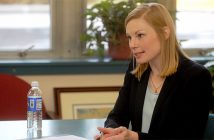
After $50 million dollars and five years, some failing schools in Colorado still have as few as 15% of students passing standardized math exams. The experiment that funneled money to the nation’s lowest-achieving 5% of schools seems not to have been successful, writes Jennifer Brown of The Denver Post.
In an analysis by The Denver Post based on federal School Improvement Grant funds and student achievement information, the results showed only a small correlation between academic improvement and the money.
Twenty-nine Colorado schools still have a year to go on their “accountability clock” before the state school board could close them or turn them into charter schools. A majority of the schools have not made notable progress, and some of the schools have worsened.
A few schools just might help define the new campaign for school improvements in the state. But of the 29 schools that are almost out of time, six had a portion of $8.8 million in federal grants. Four of them have not shown growth or had test scores that lowered, and two did improve by moving up one level on Colorado’s four-tiered accountability assessment.
Half of the schools in jeopardy either remained the same or dropped a level, and the other half moved up one level. Andy Smarick of the nonprofit Bellwether Education Partners said:
“If you funnel a whole lot of money to the same dysfunctional districts that have been running the dysfunctional schools, these are the results you should expect. What’s mystifying to me is that people thought the school improvement grant program was going to get dramatically different results than the dozens of other similar efforts at school turnaround in the past.”
Chief Education Officer Oliver Grenham says money is only one piece of the puzzle. He believes that districts should add extra school days to the academic calendar but knows the idea is not affordable.
Critics add that the outcome for turnarounds is the same nationwide. They say the money was spent before analyses were in place that could affect enduring change. Colorado Education Commissioner Richard Crandall advises that the key to transforming failing schools is to allow districts to come up with their solutions and to get their communities on board.
“We are now at this point where the state has been doing this for a while,” said Van Schoales, chief executive of A+ Colorado. “We now know that there isn’t much evidence that it’s having an impact. Is there a role for the state to play in ensuring kids have a fair shake at a good public education?”
Pueblo’s city public schools received roughly $10 million from the government’s grant program that was divided among six schools, reports The Associated Press. A majority of the funding was used to hire an education consulting firm devoted to providing what is necessary for changing school cultures and teacher and administrator training. When the city petitioned for more funding, it was turned down.
Denver’s Trevista Elementary has a student population that is 90% minority, and practically all students are eligible for free or reduced lunch. This school had a significant 24-point rise in math performance. Trevista spent a part of its $1.4 million on two extra assistant principals and concentrated on encouraging support for students such as praise when a child succeeded.




